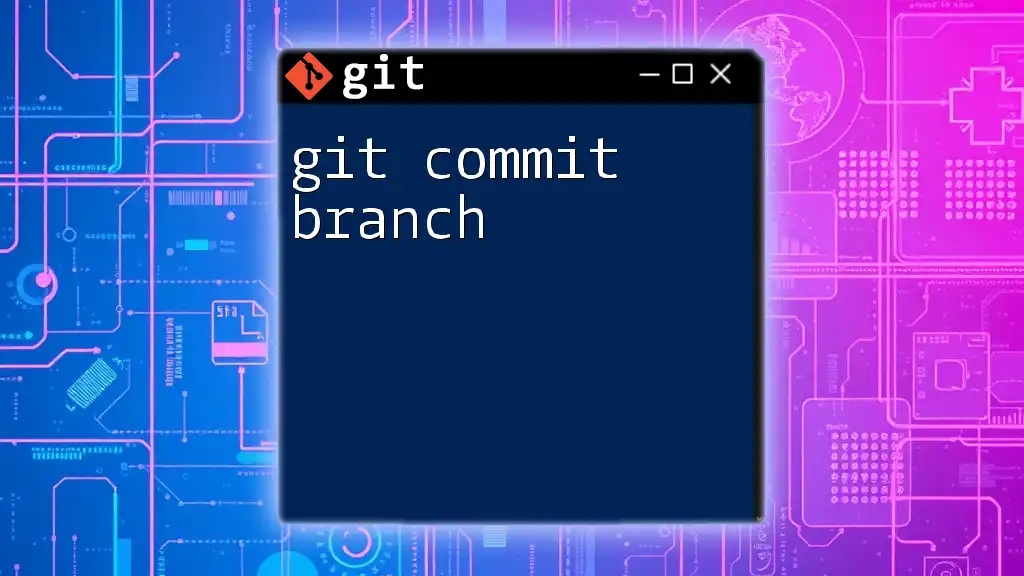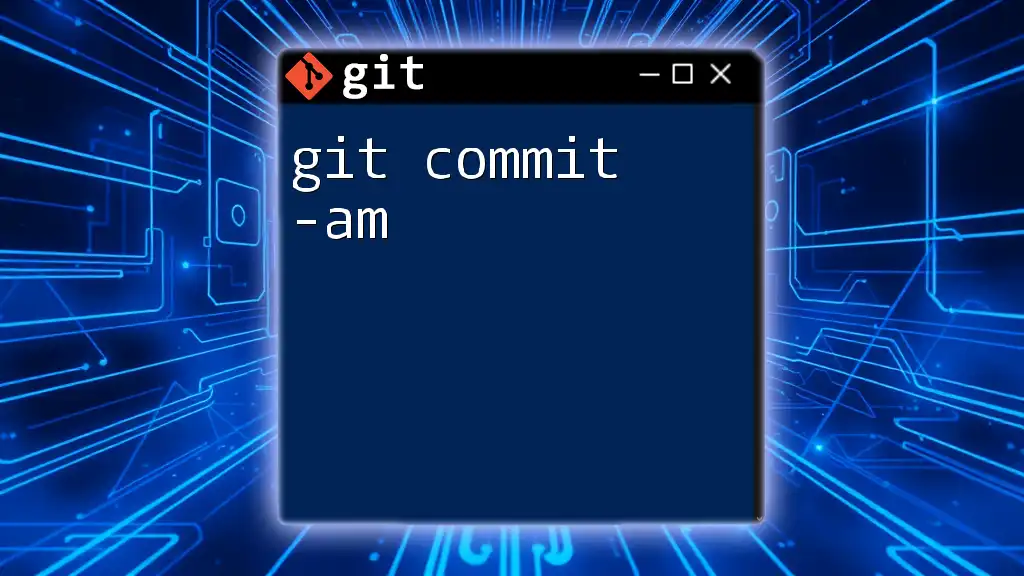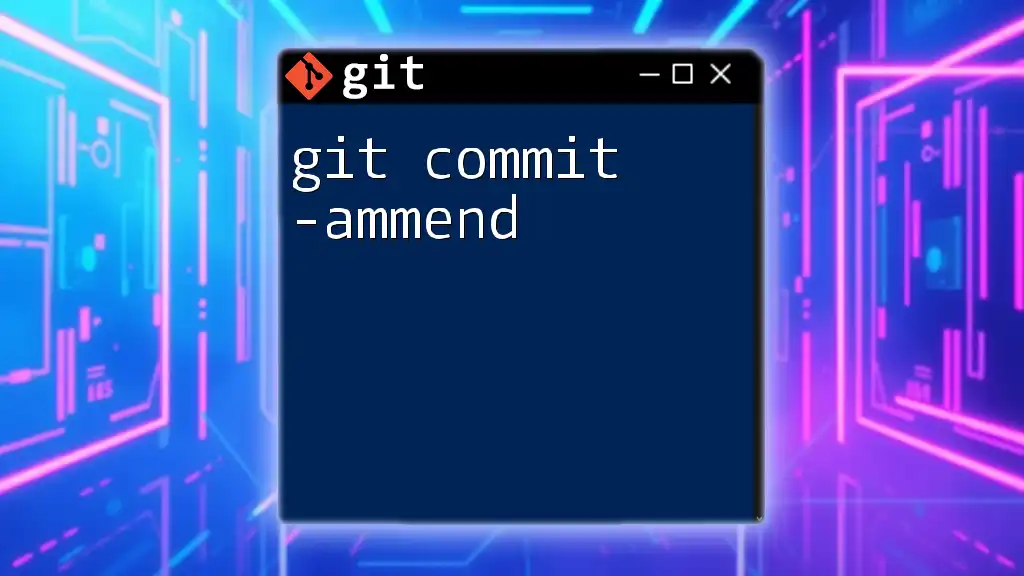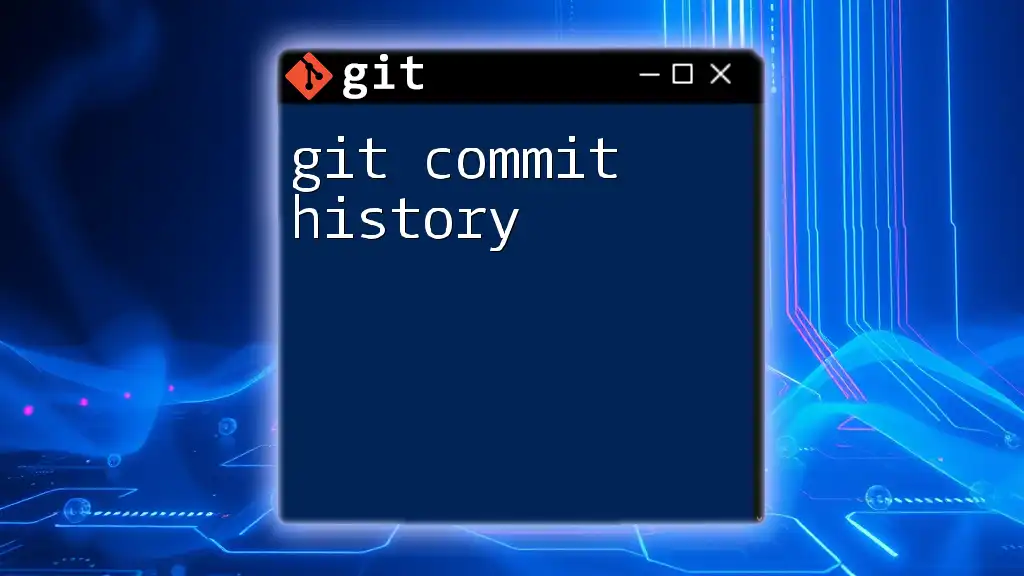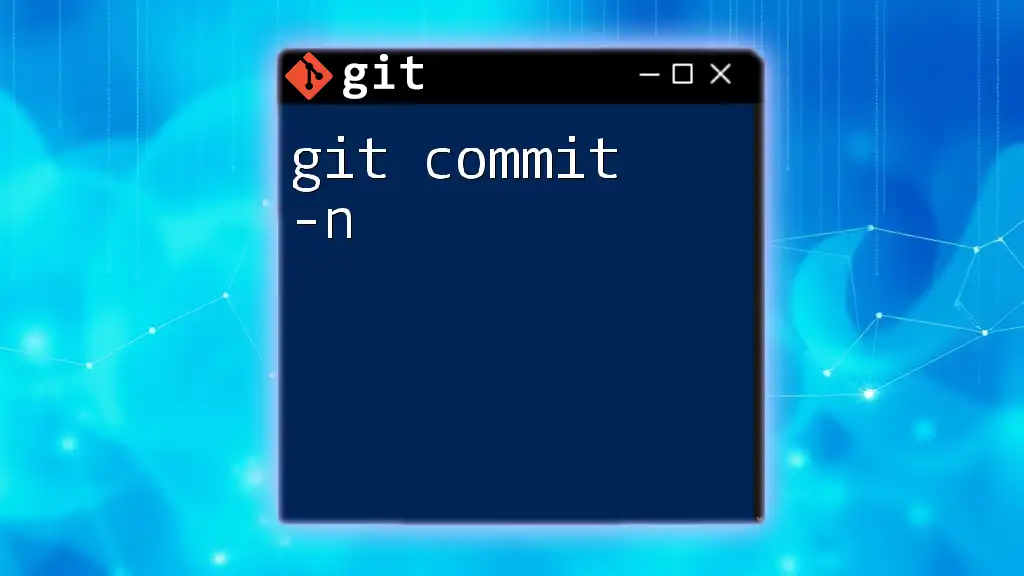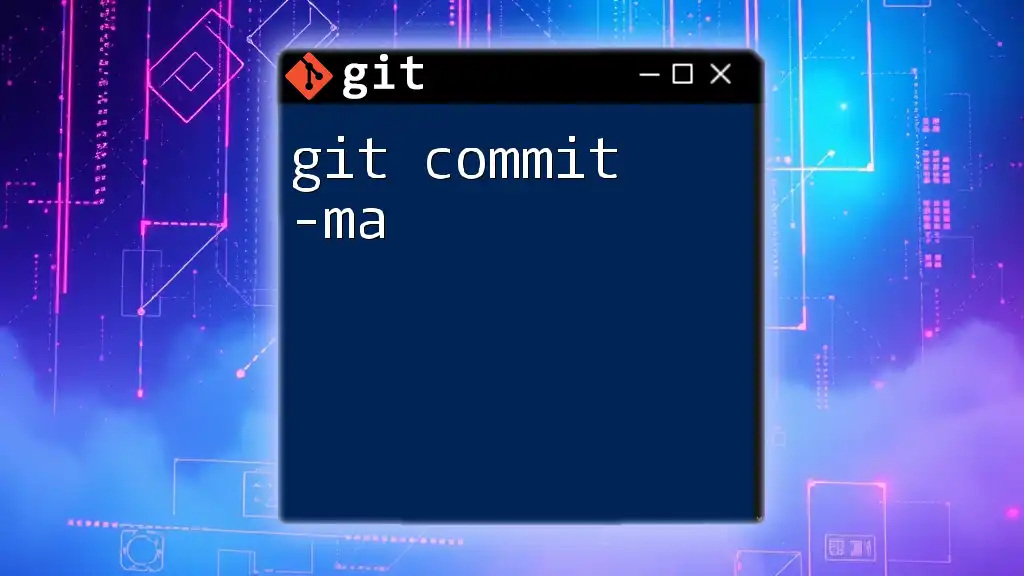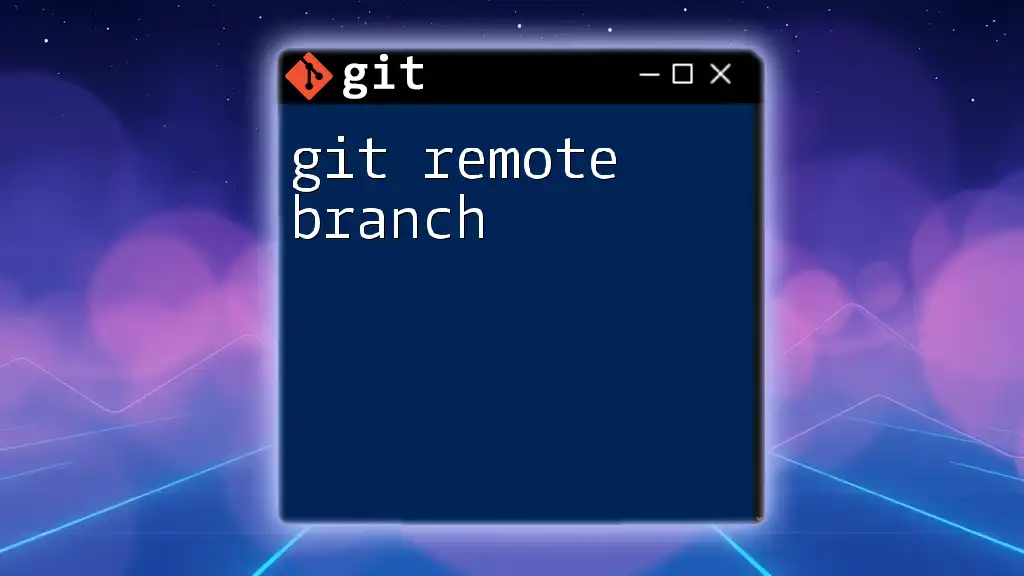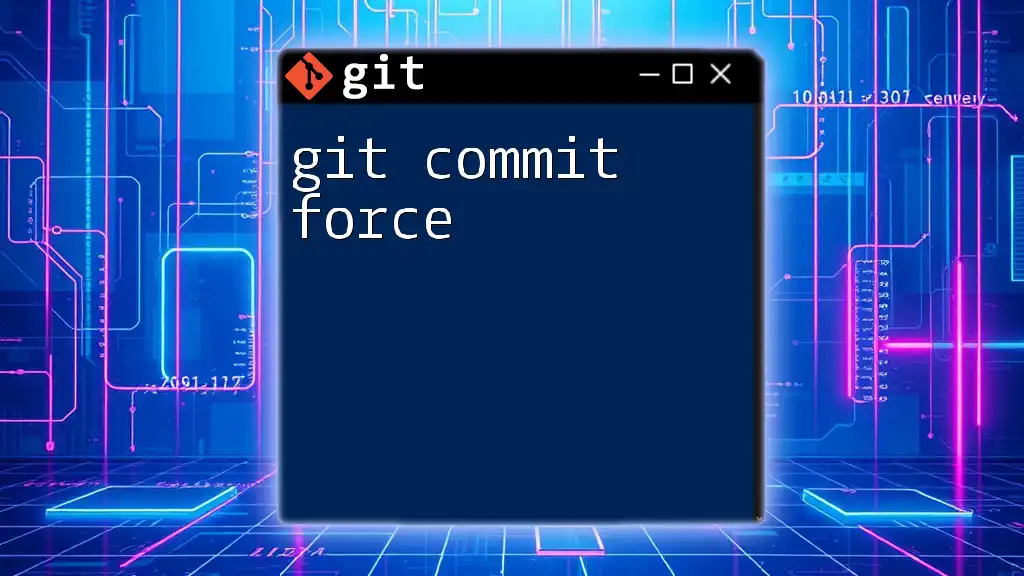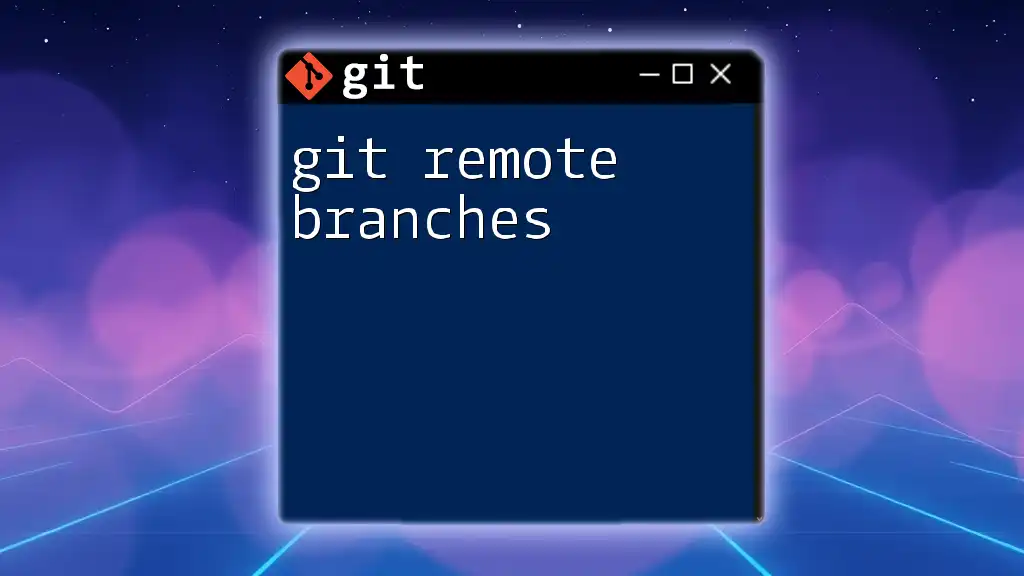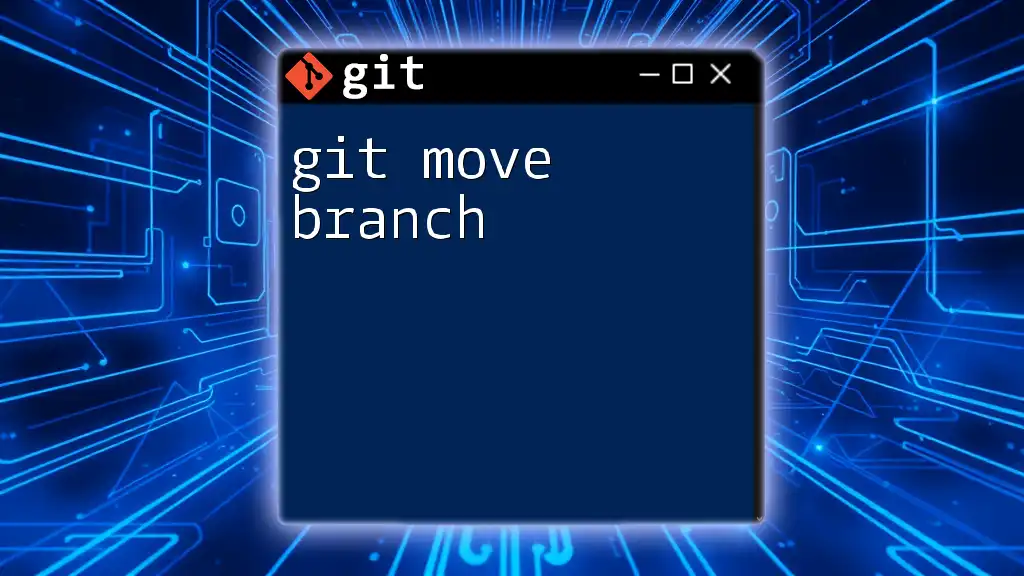A `git commit` captures a snapshot of the changes made in your repository, and when working on a specific branch, it saves those changes within that branch's history.
git commit -m "Your commit message" # commits changes on the current branch
Overview of Git Commit and Branching
Understanding Git Version Control
Version control is a system that allows multiple people to work together on files simultaneously without overwriting each other's contributions. Git is a popular version control system that facilitates collaborative work while maintaining a strong history of changes made on each file. It tracks changes made over time, allowing you to revert to earlier versions, compare changes, and collaborate with others efficiently.
What is a Git Commit?
A commit in Git is a snapshot of your project at a particular point in time. When you commit changes, Git records your modifications, including the files that were changed, added, or deleted. Each commit is associated with a unique identifier (SHA hash) that allows you to track the history of changes.
By committing changes regularly, you create a clear history of your project, making it easier to understand the evolution of your codebase. This historical record is crucial, especially when debugging issues or understanding what changes were made during a specific period.
Importance of Branching in Git
Branches are critical in Git because they allow parallel development efforts. When working on a new feature or fixing a bug, you can create a separate branch. This enables you to work independently of the main codebase without disrupting others. Once the work on the branch is completed and verified, it can be merged back into the main branch.
Common branching strategies include:
- Feature branches: For developing new features.
- Hotfix branches: For urgent bug fixes.
- Release branches: For preparing a new production release.

Necessary Prerequisites
Setting Up Git
Before diving into `git commit branch`, ensure you have Git installed on your system. Follow the appropriate installation guide for your operating system.
- Windows: Download the Git installer from the official Git website and follow the setup instructions.
- Mac: Use Homebrew to install Git by running `brew install git`.
- Linux: Install Git via the package manager for your distribution, for example, `sudo apt install git` for Ubuntu.
After installation, you need to configure Git with your user information. This can be done with the following commands:
git config --global user.name "Your Name"
git config --global user.email "your.email@example.com"
Creating a New Repository
To create a new Git repository, navigate to your project directory and initialize it with:
git init
This command creates a new `.git` directory, which contains all the metadata for your repository. You can now start tracking changes in your files.

Working with Git Branches
Creating a New Branch
To create a new branch, use the following command:
git branch [branch_name]
This command creates a new branch with the specified name based on the current branch at the HEAD. By default, you stay on the current branch after creation, so you’ll need to switch branches if you want to work on the new one.
Switching Between Branches
To switch to a new branch, use:
git checkout [branch_name]
Alternatively, you can use the newer command:
git switch [branch_name]
This command changes your working directory to the specified branch. It's essential to ensure all your changes are committed before switching branches to avoid losing progress.
Viewing Branches
To see all branches in your repository, run:
git branch
To view all branches, including remote branches, use:
git branch -a
The output will show you a list of branches, with an asterisk (*) indicating your current branch.

Making Changes and Committing to a Branch
Making Changes in a Branch
After switching to your desired branch, you can begin making changes to your project files. Simply edit your files as needed using your preferred code editor.
Staging Changes
Once you've made modifications, you need to stage them before committing. Staging is done using the following command:
git add [file_name]
To stage all modified files, you can use:
git add .
Staging allows you to control what is included in your next commit, ensuring that only the intended changes are recorded.
Committing Changes
To commit your staged changes, use:
git commit -m "Your commit message"
It's crucial to write clear and descriptive commit messages as they help you, and your team understand the history of changes in your project. A well-structured commit message usually consists of a summary in the first line followed by a more detailed explanation as needed.
For example, a good commit message might look like:
Fix: Correct typo in user interface text
- Changed "seting" to "setting" for clarity.
Checking Commit History
To view the commit history of your current branch, use:
git log
This command shows a list of commits made, including their unique identifiers (hashes), author information, dates, and messages. This history is essential for tracking progress and understanding past changes.
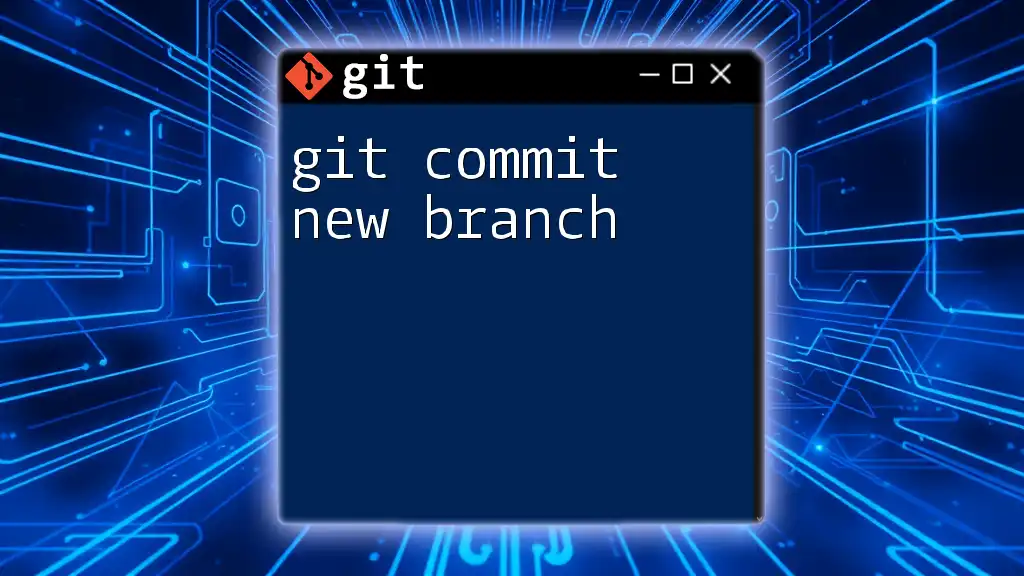
Best Practices for Commits and Branches
Crafting Effective Commit Messages
Writing effective commit messages is crucial in maintaining an understandable project history. Follow these guidelines:
- Use the imperative mood for your message (e.g., "Add feature," "Fix bug").
- Keep the header under 50 characters for readability.
- Use the body section to explain the why behind your changes for more context.
Keeping Branches Organized
Branch organization plays a foundational role in project management. Here are some best practices:
- Use consistent naming conventions, such as `feature/login`, `bugfix/logout`, or `hotfix/critical-issue`, to make it easy to discern a branch's purpose.
- Limit the lifespan of branches by merging them back into the main branch when the work is complete.
Regularly Merging Changes
Merging is the process of integrating changes from one branch into another. To merge another branch into your current branch, use:
git merge [branch_name]
When merging, it's possible to encounter merge conflicts if changes made in the two branches overlap. Git will highlight these conflicts and require you to resolve them manually before you can commit the merge.

Advanced Topics
Reverting Commits
If a mistake is made and you need to undo a committed change, you can revert to a previous commit using:
git revert [commit_id]
This command creates a new commit that undoes the changes made in the specified commit, preserving the project history.
Squashing Commits
If you want to clean up your commit history by combining several commits into one, you can squash them using:
git rebase -i HEAD~n
Replace `n` with the number of commits you want to squash. This process is useful for consolidating changes before merging a feature branch to maintain a clearer commit history.
Cherry-Picking Commits
To apply commits from one branch onto another without merging the entire branch, use the cherry-pick command:
git cherry-pick [commit_id]
This command allows you to select specific commits and add them to your current branch, making it a powerful tool for incorporating isolated changes.
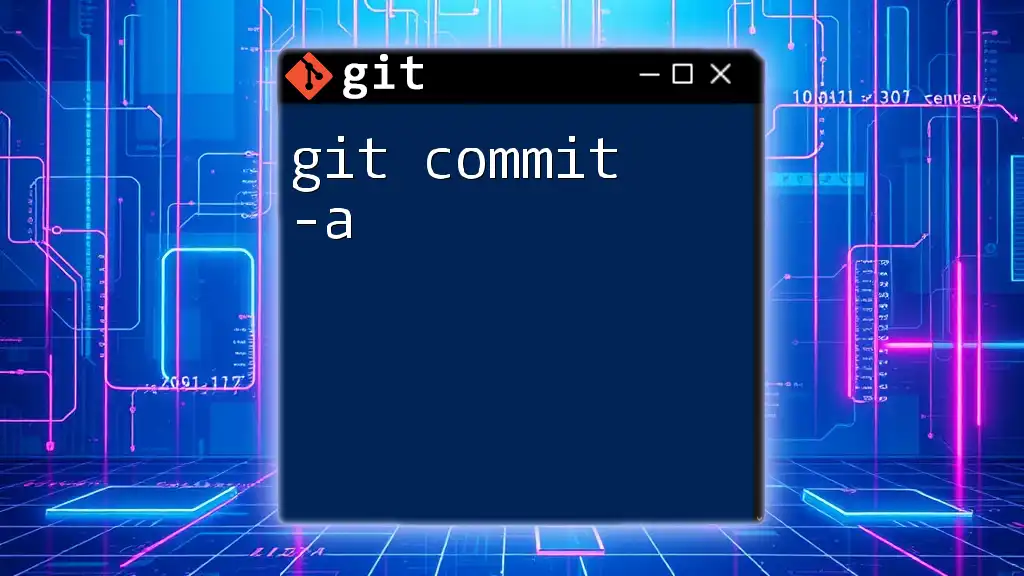
Real-World Applications
Scenario: Feature Development
Imagine you’re working on a new feature for your application. Start by creating a feature branch:
git checkout -b feature/new-login
After developing the feature and committing changes, you will ultimately merge it back into the main branch:
git checkout main
git merge feature/new-login
Scenario: Fixing Bugs
Suppose you found a bug in the production code. You can create a hotfix branch:
git checkout -b hotfix/correct-critical-bug
After making the necessary adjustments, you can commit the changes and merge back into the main branch:
git checkout main
git merge hotfix/correct-critical-bug
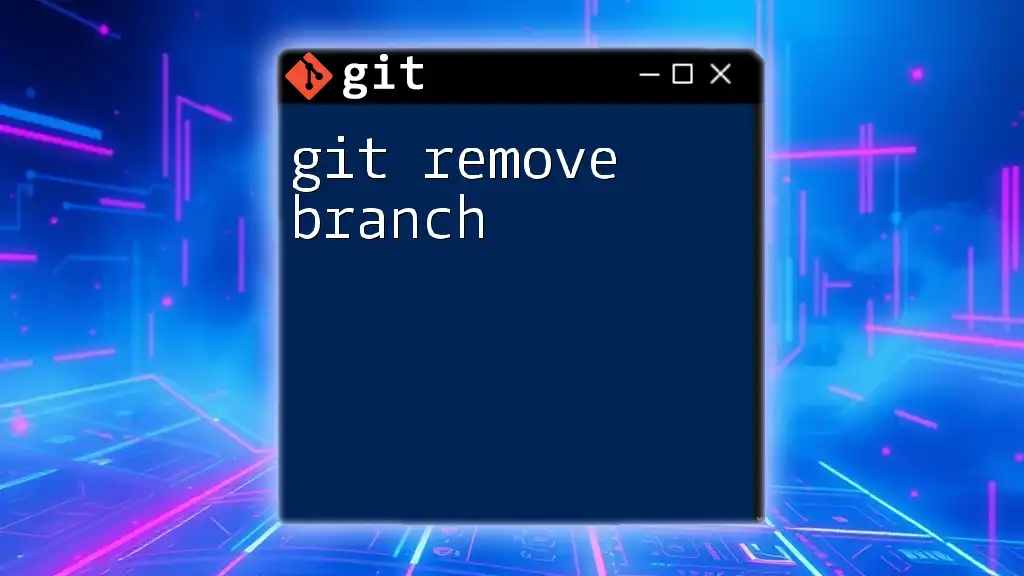
Conclusion
In this article, we explored the essential aspects of git commit branch, covering everything from basic commands to advanced practices. Understanding how to use commits and branches effectively is vital for managing projects with Git, enabling organized, collaborative development.
By applying the strategies and concepts discussed, you will enhance your Git workflow and ultimately improve your project management. Remember, practice is crucial in mastering Git, so make sure to implement these techniques in your daily work!
Resources for Further Learning
Whether you're a beginner or looking to refine your skills, consider exploring additional resources such as:
- Pro Git Book - a comprehensive guide available for free online.
- GitHub Learning Lab - hands-on tutorials to enhance your Git knowledge.
- Official Git Documentation - the definitive source for all Git-related queries.
Embrace the power of Git today, and watch your version control skills elevate!

